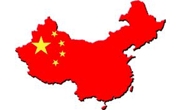Trade Cases

Leibowitz on Trade War: China’s Willing to Engage
Written by Tim Triplett
June 17, 2018
Lewis Leibowitz, trade attorney and contributor to Steel Market Update, offers the following commentary on the latest developments in Washington:
The Trump administration announced new tariffs on China on Friday, covering about $36 billion in imports (2017 figures). Two lists were released.
The first list consists of 863 tariff lines that will be subject to 25 percent tariffs if the imports are of Chinese origin. These 863 lines were part of the proposed tariffs announced by the U.S. Trade Representative in early April. The proposed list in April recommended tariffs on about 1,300 tariff lines, totaling about $50 billion in trade value. USTR reports that the final list deleted 515 tariff lines from the proposed list. The new tariffs will apply to goods from China entered or withdrawn from warehouse for consumption on or after July 6, 2018. The tariffs will remain in effect indefinitely.
The second list consists of 284 tariff lines that USTR recommends be subject to 25 percent tariffs on imports of Chinese origin. The items on the new list will be subject to a hearing process similar to the May 2018 hearing at USTR. The schedule will be released in a subsequent Federal Register notice.
A USTR fact sheet also states that “an opportunity for the public to request exclusion of a particular product from the additional 25 percent duty” will be provided. The “details” will be published in a forthcoming Federal Register notice.
Unlike the Section 232 tariffs on steel, aluminum and (maybe) automobiles and auto parts, the Section 301 exclusion process will be administered by USTR.
There is no indication that procedures for exclusion of particular products will be subject to notice and comment rulemaking. The Section 232 product exclusion regulations were issued by “interim final” rulemaking, which means they took effect immediately with an opportunity for public comment later.
Offering some background, the Section 301 tariffs do not require a presidential proclamation. Section 301(b) provides that the U.S. Trade Representative may self-initiate an investigation (which was done last year at the direction of President Trump) and may impose import restrictions if the USTR finds that a foreign country violated obligations of a trade agreement, or are unreasonable and impose a burden on U.S. commerce.
In a statement Friday, President Trump said, “these tariffs are essential to preventing further unfair transfers of American technology and intellectual property to China, which will protect American jobs. In addition, they will serve as an initial step toward bringing balance to the trade relationship between the United States and China.”
The president’s statement also promised “additional tariffs if China engages in retaliatory measures, such as imposing new tariffs on United States goods, services, or agricultural products; raising non-tariff barriers; or taking punitive actions against American exporters or American companies operating in China.”
China has already made an announcement of retaliatory tariffs and other measures: “We will immediately introduce taxation measures of the same scale and the same strength,” China’s Ministry of Commerce stated. The statement went on to note that, “all the economic and trade achievements previously reached by the two parties will no longer be valid at the same time,” calling the U.S. behavior “short-sighted.”
The China 2025 program designed to further the international presence of Chinese manufacturing appears to be the primary focus of the tariffs in this round. Most of the tariff lines in the first list are in the following chapters of the Harmonized Tariff Schedules: Chapter 84 (nuclear reactors, boiler, machinery); Chapter 85 (electrical machinery, equipment and parts); Chapter 86 (railway equipment); Chapter 87 (motor vehicles and parts); Chapter 88 (aircraft and parts); Chapter 89 (ships, boats); and Chapter 90 (testing and measuring instruments). In addition, tires for aircraft (Chapter 40) and radioactive isotopes (Chapter 28) are included.
The proposed tariffs in the second list concentrate on Chapters 84-90, as well. The second list also includes: Chapter 39 (plastic films); Chapter 70 (quartz glass rods); Chapter 73 (articles of steel, such as bridges and sections); and Chapter 76 (aluminum wire).
Clearly, the president and his team are intent on escalating the “trade war” with China. China certainly appears willing to engage.
Lewis Leibowitz
The Law Office of Lewis E. Leibowitz
1400 16th Street, N.W.
Suite 350
Washington, D.C. 20036
Phone: (202) 776-1142
Fax: (202) 861-2924
Cell: (202) 250-1551
www.lellawoffice.com

Tim Triplett
Read more from Tim TriplettLatest in Trade Cases

USTR targets China in new 301 probe; Biden calls for higher tariffs
The Biden administration on Wednesday announced measures to support the domestic steel industry.

Price: New trade rules will help domestic industries fight “unfair” trade
The Department of Commerce (DOC) has issued new rules to combat evolving "unfair" trade practice — including the unfair trade of steel products. They go into effect on Wednesday, April 24.

CRU: Mexico to toughen controls on steel imports
To ease trade tensions with the United States, the economy ministry in Mexico is preparing measures to strengthen definitions on steel being shipped into the country. Mexico has faced accusations it is being used as a route for steel and aluminum produced in Asia to be sent on to the US, so-called triangulation.

Biden reiterates position on USS sale
President Biden said on Wednesday he would stand by his commitment to US workers regarding the proposed sale of U.S. Steel to Japan’s Nippon Steel.

Japan’s Kishida and Biden to meet amid tensions around USS sale
Japanese Prime Minister Fumio Kishida will be in Washington this week where one topic under discussion with President Biden will be U.S. Steel's proposed sale to Nippon Steel.
